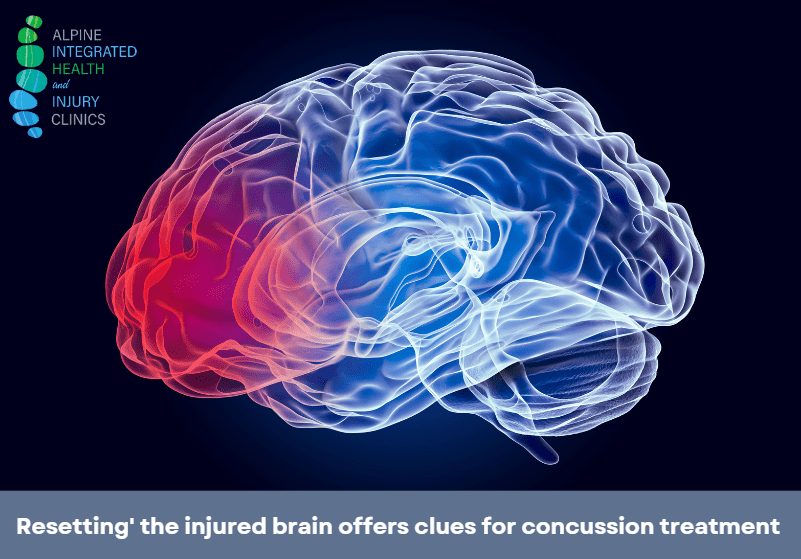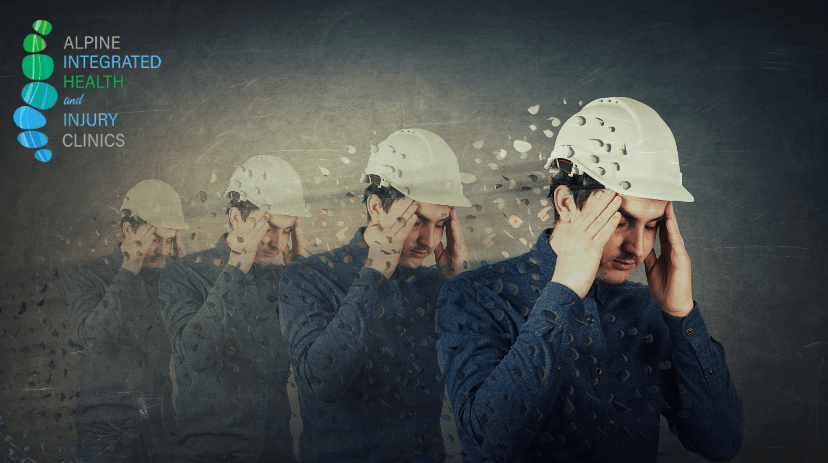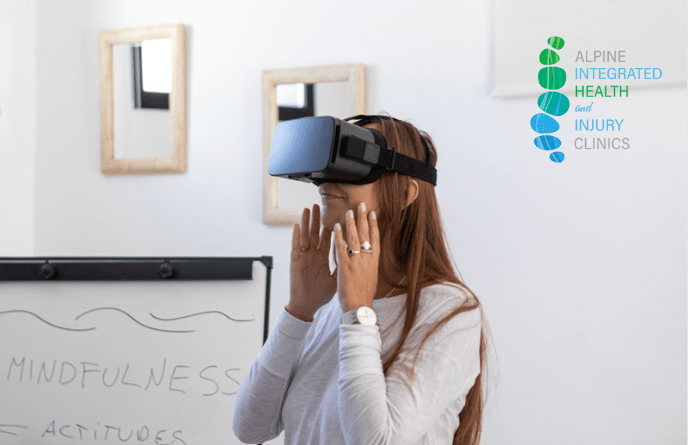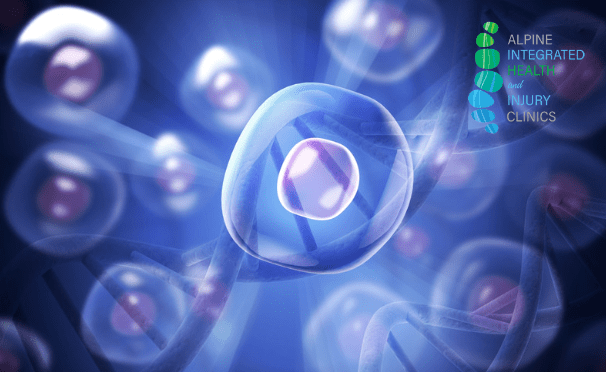In recent years, the enigmatic world of neuroscience has revealed some astounding possibilities for treating brain injuries, particularly concussions. A pioneering concept, dubbed “resetting” the injured brain, suggests a radical shift in our approach to healing the complex organ post-trauma. This novel idea raises the prospect of not just treating symptoms, but actually restoring the brain to its pre-injury state, opening a new frontier in concussion management.
From biochemical rebalancing and neural circuitry resetting to innovative methods in regenerative medicine, this ground-breaking approach may offer invaluable clues to effective and holistic concussion treatment. As we delve into the nuances of this cutting-edge concept, we’ll explore the science behind it, the research supporting it, and the potential implications for those affected by brain injuries.
Understanding the Injured Brain
The human brain is a complex and delicate organ that controls all our bodily functions, thoughts, and emotions. However, it is also very vulnerable to injury, especially from blows to the head. When the brain is injured, either from a concussion or more severe trauma, it can disrupt the normal functioning of the brain and lead to a range of symptoms like headaches, dizziness, nausea, and cognitive impairment.
To better understand the injured brain, scientists have been studying the underlying mechanisms of concussion and other traumatic brain injuries. They have identified changes in brain structure and function that occur after an injury, including inflammation, swelling, and damage to neurons and their connections.
These changes can affect various regions of the brain, including the prefrontal cortex, which is responsible for decision-making and impulse control, the amygdala, which regulates emotions, and the hippocampus, which plays a crucial role in memory formation and recall.
By understanding these changes and how they impact brain function, scientists hope to develop better treatments for concussion and other traumatic brain injuries. One promising avenue of research is brain resetting, which involves using targeted stimulation to help the brain reorganize and recover from an injury.

The Consequences of Concussions
Concussions are a type of traumatic brain injury that can have serious consequences. They are typically caused by a blow to the head or a violent jolt that causes the brain to bounce or twist inside the skull. The effects of a concussion can vary widely depending on the severity of the injury and how quickly it is diagnosed and treated.
Some of the most common symptoms of a concussion include headache, dizziness, confusion, memory loss, mood changes, sensitivity to light and sound, and difficulty concentrating. In severe cases, a concussion can cause loss of consciousness or even coma.
While many people recover from concussions with rest and time, others may experience long-term effects such as post-concussion syndrome, which can cause persistent headaches, fatigue, and cognitive impairment.
Athletes who play contact sports are at a particularly high risk for concussions, and repeated concussions over time can lead to a condition called chronic traumatic encephalopathy (CTE). CTE is a degenerative brain disease that can cause memory loss, depression, and other neurological symptoms, and has been linked to the suicides of several professional football players.
Given the potentially serious consequences of concussions, it is important to take them seriously and seek prompt medical attention if you suspect you have suffered a head injury.

Uncovering Clues for Treatment
Scientists and medical researchers are working to uncover new clues and develop more effective treatments for concussions and other traumatic brain injuries. Some of the most promising areas of research include brain resetting, regenerative medicine, and neuroplasticity.
Brain resetting involves using targeted stimulation techniques, such as transcranial magnetic stimulation (TMS) or transcranial direct current stimulation (tDCS), to help the brain reorganize and recover from an injury. These techniques can be used to stimulate specific regions of the brain, promote the growth of new neurons and connections, and improve overall brain function.
Regenerative medicine is another promising area of research for concussion treatment. This involves using stem cells or other types of cells to regenerate damaged tissue and promote healing in the brain. Researchers are also exploring the use of growth factors and other biologics to stimulate brain regeneration and repair.
Neuroplasticity is the brain’s ability to adapt and change in response to new experiences and stimuli. By understanding how neuroplasticity works, scientists hope to develop new therapies that can help the brain recover from injury and regain lost function.
While there is still much to learn about concussions and traumatic brain injuries, these and other areas of research offer hope for better treatments and improved outcomes for those who suffer from these conditions.
The Importance of Brain Resetting
Brain resetting is a promising new approach to concussion treatment that could revolutionize how we think about brain injury rehabilitation. Rather than simply treating the symptoms of a concussion, brain resetting aims to reorganize and reset the brain after an injury, promoting healing and recovery.
When the brain is injured, it can become disorganized and inefficient, leading to a range of symptoms like memory loss, cognitive impairment, and emotional instability. Brain resetting works by using targeted stimulation techniques to help the brain reorganize itself and establish new neural connections.
This can help the brain recover lost function and improve overall cognitive performance. Brain resetting techniques like transcranial magnetic stimulation (TMS) and transcranial direct current stimulation (tDCS) have been shown to be effective in improving working memory, attention, and other cognitive abilities in patients with concussions and other traumatic brain injuries.
The importance of brain resetting lies not only in its potential to improve outcomes for individuals with concussions, but also in its potential to prevent long-term complications like chronic traumatic encephalopathy (CTE). By promoting healing and recovery in the brain, brain resetting could help to reduce the risk of long-term brain damage and improve quality of life for those who suffer from concussions and other traumatic brain injuries.

The Science Behind Brain Resetting
The science behind brain resetting is based on the principles of neuroplasticity and brain reorganization. Neuroplasticity refers to the brain’s ability to change and adapt in response to new experiences and stimuli, while brain reorganization involves the formation of new neural connections and networks.
When the brain is injured, it can become disorganized and inefficient, leading to a range of symptoms like memory loss, cognitive impairment, and emotional instability. Brain resetting works by using targeted stimulation techniques to help the brain reorganize itself and establish new neural connections.
One of the most commonly used techniques for brain resetting is transcranial magnetic stimulation (TMS), which uses magnetic fields to stimulate specific regions of the brain. TMS can be used to increase or decrease activity in certain areas of the brain, promoting the growth of new neurons and connections.
Another technique that has shown promise for brain resetting is transcranial direct current stimulation (tDCS), which uses a low-level electrical current to stimulate the brain. tDCS can be used to enhance cortical excitability, improve neuronal synchronization, and promote neuroplasticity.
Innovative Treatments for Concussion
In recent years, there has been a growing interest in developing innovative treatments for concussion that go beyond traditional approaches like rest and medication. Some of the most promising new treatments for concussion include brain resetting, regenerative medicine, and virtual reality therapy.
Brain resetting involves using targeted stimulation techniques like transcranial magnetic stimulation (TMS) or transcranial direct current stimulation (tDCS) to help the brain reorganize and recover from an injury. These techniques can be used to stimulate specific regions of the brain, promote the growth of new neurons and connections, and improve overall brain function.
Regenerative medicine is another promising area of research for concussion treatment, which involves using stem cells or other types of cells to regenerate damaged tissue and promote healing in the brain. Researchers are also exploring the use of growth factors and other biologics to stimulate brain regeneration and repair.
Virtual reality therapy is another innovative treatment for concussion that has shown promise in recent studies. This involves using immersive virtual reality environments to help patients recover from cognitive and physical symptoms of concussion. Virtual reality therapy can be used to simulate real-world situations, promote motor and sensory integration, and improve overall cognitive performance.

The Road to Recovery
Recovering from a concussion can be a long and challenging process that requires patience, rest, and time. While there is no one-size-fits-all approach to concussion recovery, there are several steps that can help you along the road to recovery.
The first step in concussion recovery is to rest and avoid activities that could further exacerbate your symptoms. This may include taking time off work or school, avoiding strenuous physical activity, and limiting screen time and other activities that require concentration.
After a period of rest, you can begin a gradual return to normal activities, starting with light aerobic exercise and gradually increasing intensity over time. You may also benefit from working with a physical therapist or other healthcare provider who can provide guidance and support throughout the recovery process.
In addition to physical rehabilitation, concussion recovery may also involve cognitive rehabilitation, which focuses on improving cognitive function and addressing symptoms like memory loss, attention deficits, and executive dysfunction. This may involve working with a neuropsychologist or other healthcare provider who can provide targeted therapies and interventions to help you recover lost function and improve overall cognitive performance.
It is important to take care of yourself both physically and mentally during the recovery process. This may include eating a healthy diet, getting adequate sleep, and seeking support from friends, family, or a mental health provider if needed.

Unlocking the Healing Power of the Brain
The brain is an incredibly powerful and complex organ that has the ability to heal and recover from injuries like concussions with the help of its natural ability to adapt and change, known as neuroplasticity. By unlocking the healing power of the brain, researchers and healthcare providers are developing new and innovative ways to promote healing and recovery after a concussion.
One promising approach to unlocking the healing power of the brain is through brain resetting techniques like transcranial magnetic stimulation (TMS) and transcranial direct current stimulation (tDCS). These techniques use targeted stimulation to help the brain reorganize and establish new neural connections, promoting recovery and improving overall cognitive function.
Regenerative medicine is another promising area of research for unlocking the healing power of the brain. This involves using stem cells or other biological materials to regenerate damaged tissue and promote healing in the brain. Researchers are also exploring the use of growth factors and other biologics to stimulate brain regeneration and repair.
Cognitive rehabilitation is another effective way to unlock the healing power of the brain after a concussion. This involves working with a neuropsychologist or other healthcare provider to develop targeted therapies and interventions to help improve cognitive function and address symptoms like memory loss, attention deficits, and executive dysfunction.
Support the brain’s natural healing process by getting plenty of rest, eating a healthy diet, staying hydrated, and avoiding activities that could further exacerbate symptoms. With the right combination of interventions and support, most people are able to make a full recovery and regain their pre-injury level of function and quality of life.
A New Era of Concussion Treatment
We are entering a new era of concussion treatment, one that is characterized by a growing understanding of the complexity of brain injuries and the potential for new and innovative treatments to promote healing and recovery.
In recent years, there has been a surge of interest in brain resetting techniques like transcranial magnetic stimulation (TMS) and transcranial direct current stimulation (tDCS), which have shown promise in promoting recovery and improving overall cognitive function after a concussion. These techniques work by using targeted stimulation to help the brain reorganize and establish new neural connections, promoting healing and recovery.
Regenerative medicine is another promising area of research for concussion treatment, which involves using stem cells or other biological materials to regenerate damaged tissue and promote healing in the brain. Researchers are also exploring the use of growth factors and other biologics to stimulate brain regeneration and repair.
Virtual reality therapy is another promising new approach to concussion treatment that holds great promise for individuals with cognitive and physical symptoms of concussion. This involves using immersive virtual reality environments to simulate real-world situations, promote motor and sensory integration, and improve overall cognitive performance.
These and other new approaches to concussion treatment represent an exciting new frontier in brain injury rehabilitation. By continuing to explore and develop new and innovative treatments for concussion, researchers and healthcare providers can help to improve outcomes and quality of life for individuals who suffer from this common and debilitating injury.

The Future of Brain Injury Rehabilitation
The future of brain injury rehabilitation is an exciting and promising one, with rapid advances being made in the fields of neuroscience, regenerative medicine, and technology. Here are some of the key trends and developments that are shaping the future of brain injury rehabilitation:
- Personalized treatment: With advances in genetics and precision medicine, researchers are increasingly exploring personalized treatment approaches for brain injuries. This involves tailoring treatments to an individual’s unique genetic makeup, medical history, and specific injury characteristics, in order to optimize outcomes.
- Regenerative medicine: Regenerative medicine holds great promise for brain injury rehabilitation, with researchers exploring the use of stem cells, gene therapy, and other biologics to stimulate brain regeneration and repair.
- Brain-machine interfaces: Brain-machine interfaces (BMIs) are rapidly advancing, with researchers developing new devices that can help people with brain injuries to communicate, move, and control their environments using only their thoughts.
- Virtual and augmented reality: Virtual and augmented reality technologies are being used to create immersive environments that can help individuals with brain injuries to improve cognitive function, motor skills, and overall quality of life.
- Big data and machine learning: By analyzing large-scale datasets and using machine learning techniques, researchers are able to identify patterns and correlations that can lead to more effective treatments and better outcomes for individuals with brain injuries.
Overall, the future of brain injury rehabilitation is a promising one, with advances in technology, medicine, and neuroscience offering new and innovative ways to promote healing, recovery, and improved quality of life.
